What is Vitiligo?
Vitiligo is a chronic autoimmune disorder marked by depigmentation patches on the skin, resulting in a stark contrast between affected and unaffected skin areas. According to NCBI, it affects an estimated 0.5% to 2% of the world's population, impacting millions of people globally. The impact of vitiligo goes beyond its physical symptoms, profoundly affecting psychological well-being, social interactions, and overall quality of life. Furthermore, the psychological burden is substantial, with many patients experiencing depression and anxiety symptoms. According to research published in the Journal of the American Academy of Dermatology, approximately 25-30% of vitiligo patients exhibit clinically significant depressive symptoms, while around 15-20% report anxiety disorders.
The ongoing need for treatment and its associated costs can impose a considerable financial strain on patients and their families. Public health efforts that address the psychosocial dimensions of vitiligo, alongside medical interventions, are crucial for providing comprehensive care to patients. Support groups and counseling services play pivotal roles in assisting individuals in coping with the emotional challenges associated with vitiligo.
World Vitiligo Day 2024 – United by the skin
World Vitiligo Day is an annual observance dedicated to raising awareness about vitiligo, a skin condition characterized by the loss of pigment in patches of skin, resulting in white or depigmented areas. This day serves to educate the public, support those affected by this rare pigmentation disorder, and advocate for greater understanding and acceptance of the condition worldwide.
The purpose of the day includes:
- Increasing awareness about vitiligo and its impact on individuals and communities.
- Promoting acceptance and understanding of vitiligo patients.
- Advocating for access to effective treatments and healthcare services.
- Supporting ongoing research efforts to better understand and manage vitiligo.
World Vitiligo Day has contributed to increased public understanding and acceptance of vitiligo, improved access to treatment options and healthcare services for vitiligo patients, enhanced collaboration among researchers, healthcare professionals, and advocacy groups and empowerment of individuals with vitiligo to embrace their uniqueness and advocate for their rights.
Vitiligo Prevalence Across Regions and Ethnicities
Vitiligo places a significant psychosocial burden on individuals, compelling them to conceal lesions. This often leads to feelings of stress, sadness, and low self-esteem. Social stigma further compounds these challenges, particularly in cultural contexts, underscoring the need for culturally sensitive support. Anxiety and depression frequently accompany these visible differences and societal expectations.
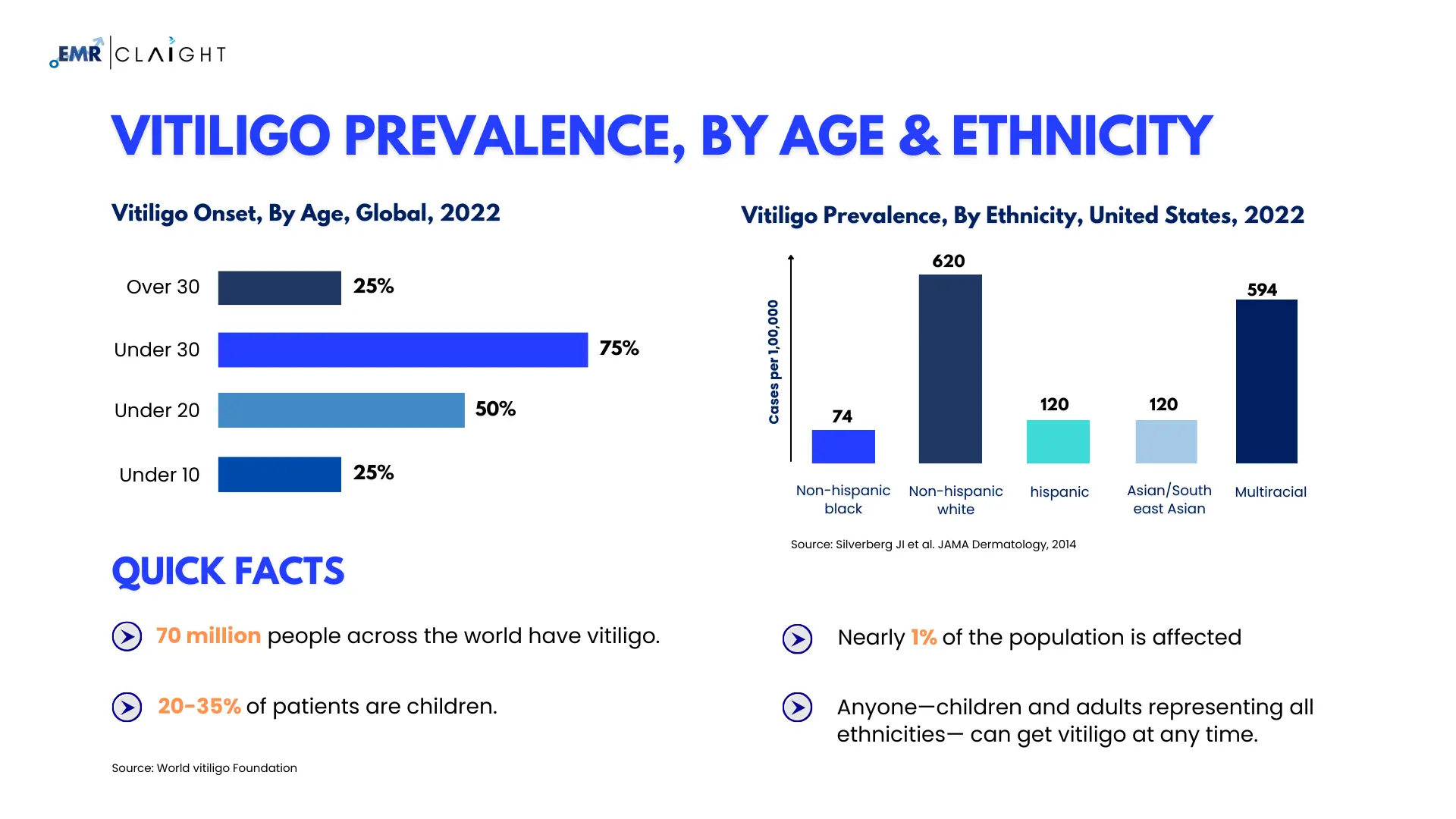
Vitiligo Prevalence Across Regions and Ethnicities
Overview of Vitiligo Prevalence Studies
| Prevalence type |
Description |
Range/Percentage |
| Global Prevalence |
Estimated worldwide prevalence |
0.5–1% |
| Regional Prevalence |
The highest incidence: India, followed by Mexico and Japan |
India: up to 8.8%, Mexico: 2.6–4%, Japan: 1.68% |
| Gender Differences |
Equal prevalence in males and females |
-- |
| Meta-Analysis |
Pooled prevalence from various studies |
Community-based: 0.2%, Hospital-based: 1.8% |
| Age-Related Increase |
Vitiligo prevalence increases with age |
Varies with different age groups. |
| Multinational Study (Europe, USA, and Japan) |
vitiligo prevalence among 35,694 survey participants (Europe, n = 18 785; USA, n = 8517; Japan, n = 8392) |
1.3% |
| Korean Study |
Three-year period, comprehensive review using Korean population data |
0.12–0.13% |
| Bornholm Study |
Prevalence on the island of Bornholm in Denmark |
0.38% |
| French West Indies |
Prevalence in the black population of the French West Indies |
Like or slightly less than the white population. |
Source: Salama, Abdelaziz H et al. “Unveiling the Unseen Struggles: A Comprehensive Review of Vitiligo's Psychological, Social, and Quality of Life Impacts.” Cureus vol. 15,9 e45030. 11 Sep. 2023, doi:10.7759/cureus.45030
- According to an article published by NCB I, the condition markedly diminishes quality of life, particularly among younger patients, impacting their daily routines, professional aspirations, and personal relationships. Severity of the disease exacerbates these effects, especially when lesions are prominent or occur on darker skin tones. Over time, managing the disease can foster greater acceptance and improve overall quality of life.
- An NCBI article reports that the estimated prevalence of vitiligo ranges around 1-2% worldwide.
- According to the World Vitiligo Foundation -
- 70 million people across the world have vitiligo.
- There are no boundaries of ethnicity, race, or gender.
- 20-35% of patients are children.
- Nearly 1% of the population is affected.
Read more about the prevalence and treatment-seeking behavior for patients with Vitiligo here.
Advent of Novel Therapies such as Excimer Laser Treatment for Effective Management of Vitiligo
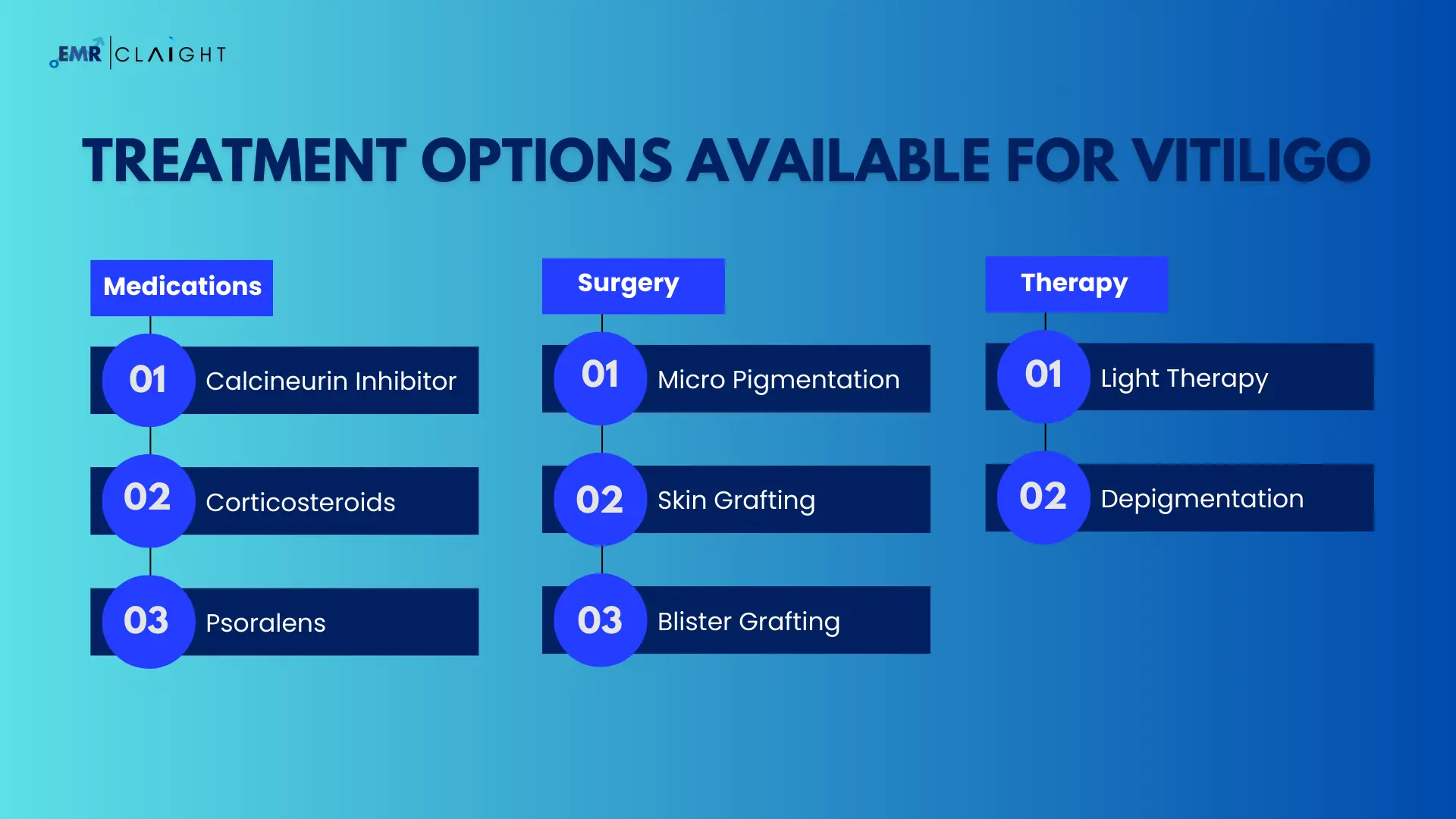
Vitiligo, characterized by the loss of pigmented patches on the skin, can be controlled with a variety of treatments, including medication, therapy, and surgery, all aimed at improving or even leaving the skin healed. While drug therapy forms the basis of vitiligo treatment, corticosteroids are one of the most used drug types. These anti-inflammatory drugs help restore skin color by reducing the immune response that causes depigmentation. However, long-term use may cause side effects such as skin thinning.
Treatments such as oral corticosteroids and immunosuppressants may be considered for vitiligo, but these drugs have a higher risk of side effects and are usually used in severe cases. Another therapy includes Narrowband ultraviolet B (NB-UVB) therapy, in which patients are exposed to specific wavelengths of ultraviolet light that promotes re-pigmentation. This treatment is usually given two to three times a week for several months and has been shown to be effective in stabilizing the condition and inducing re-pigmentation in many patients.
Excimer laser treatment uses UVB light to the affected area, providing more local treatment, especially for small white spots. Both types of treatments are generally well tolerated but require frequent visits and carry the risk of skin burns and long-term skin aging.
A common surgical procedure is autologous skin grafting, in which a small portion of the patient's pigmented skin is transplanted into the depigmented area. This method can produce excellent cosmetic results but can also cause scarring and infection. Another surgical procedure is blister grafting, which uses suction to create blisters in pigmented skin and then transfers them to depigmented areas. This method is less invasive and causes less scarring.
Vitiligo Treatment Market is Projected to Grow at a CAGR of 4.6% in Upcoming Years
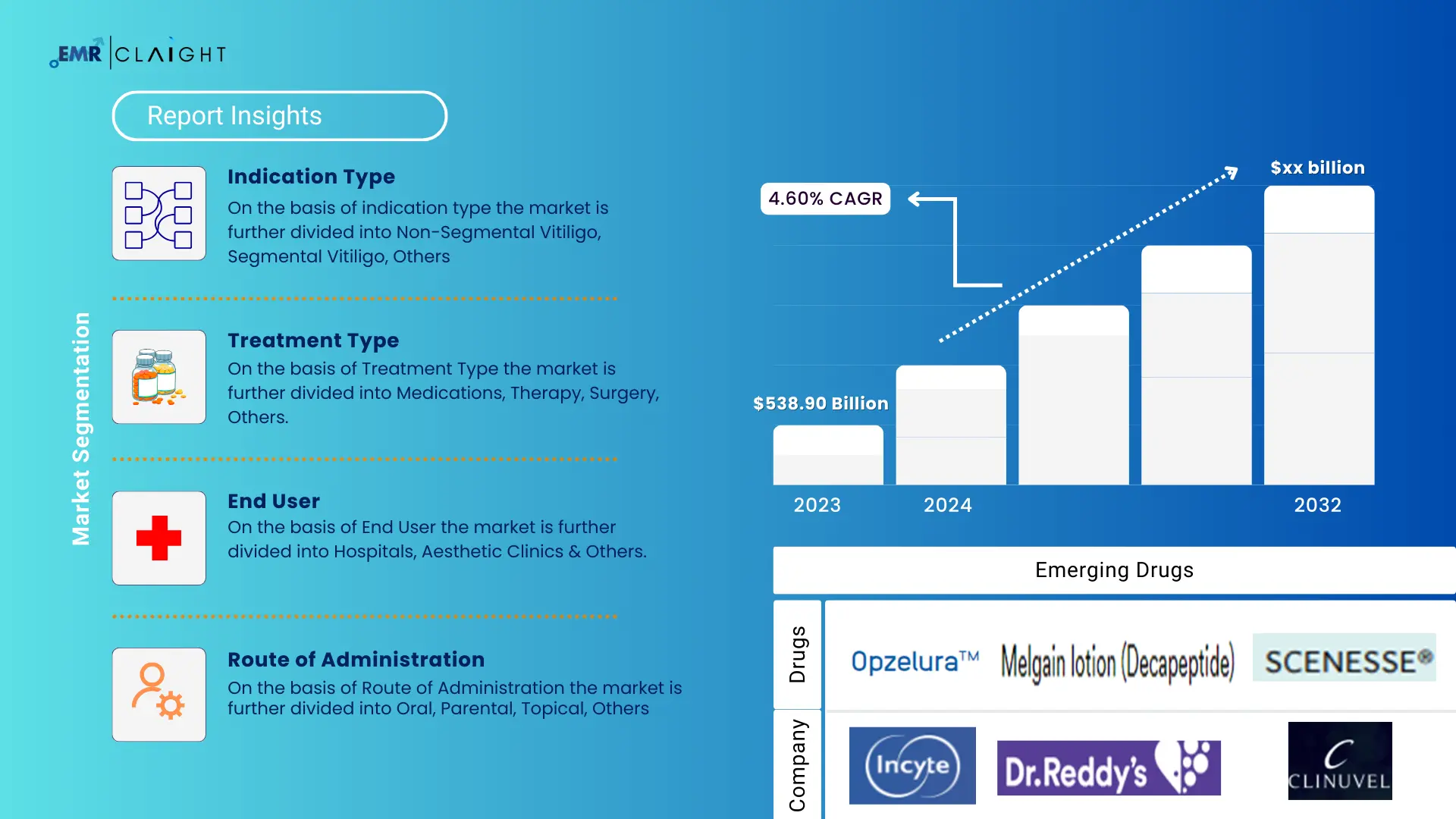
The vitiligo treatment market size attained a value of USD 538.90 million in 2023, driven by the rising disease prevalence and the discovery of advanced diagnostics and therapeutics. The market is anticipated to grow at a CAGR of 4.6% during the forecast period of 2024-2032 likely to attain a value of USD 807.70 million by 2032.
The Vitiligo Treatment Market report by Expert Market Research covers the following treatments in detail
- Medications
- Calcineurin Inhibitors
- Corticosteroids
- Psoralens
- Therapy
- Depigmentation
- Light Therapy
- Surgery
- Skin Grafting
- Blister Grafting
- Micro Pigmentation
Breakthroughs in Medication and Targeted Phototherapy to Improve Vitiligo Treatment Outcomes
The vitiligo treatment market is poised for significant growth, driven by medical advancements, increased awareness, and the rising psychosocial impact of the condition. Continuous research and innovation are expected to further expand the range of effective treatment options, improving the quality of life for patients with vitiligo.
- New drug approvals for Vitiligo treatment
Opzelura (Ruxolitinib Cream): In 2021, the FDA approved Opzelura, a topical Janus kinase (JAK) inhibitor cream developed by Incyte Corporation . This cream represents a new class of treatments specifically targeting the immune pathways involved in vitiligo. Clinical trials have shown that Opzelura can effectively re-pigment skin in patients with non-segmental vitiligo.
- Advancements in Phototherapy
Excimer Laser Technology: Improvements in excimer laser technology, such as the 308 nm excimer laser, have enhanced targeted phototherapy for vitiligo. This technology delivers focused ultraviolet B (UVB) light to affected areas, promoting re-pigmentation with fewer side effects compared to traditional phototherapy.
- Adoption of Combination Therapies for Higher Efficacy
Multimodal Approaches: Combining treatments like phototherapy, topical corticosteroids, and immunomodulators has shown improved efficacy in vitiligo management. For instance, the combination of excimer laser therapy with topical ruxolitinib has demonstrated enhanced re-pigmentation outcomes.
- Accessible Treatment Options using Portable Devices
Home Phototherapy Devices: Innovations in portable UVB phototherapy devices allow patients to undergo treatment at home. Devices like the handheld TheraBrite™ UVB light therapy system increase convenience and adherence to therapy, making treatment more accessible. It is a portable home-use device for vitiligo patients, allowing consistent and convenient treatment schedules.
Celebrating World Vitiligo Day is more than just acknowledging this rare medical condition. It is also about advocating inclusivity and embracing diversity in various communities across the globe. It empowers individuals to feel seen, heard, valued and accepted. Moreover, the evolution in vitiligo treatment market following rapid advancements in medical research, technology, and pharmaceutical developments is expected to produce several positive outcomes for those affected in coming years.

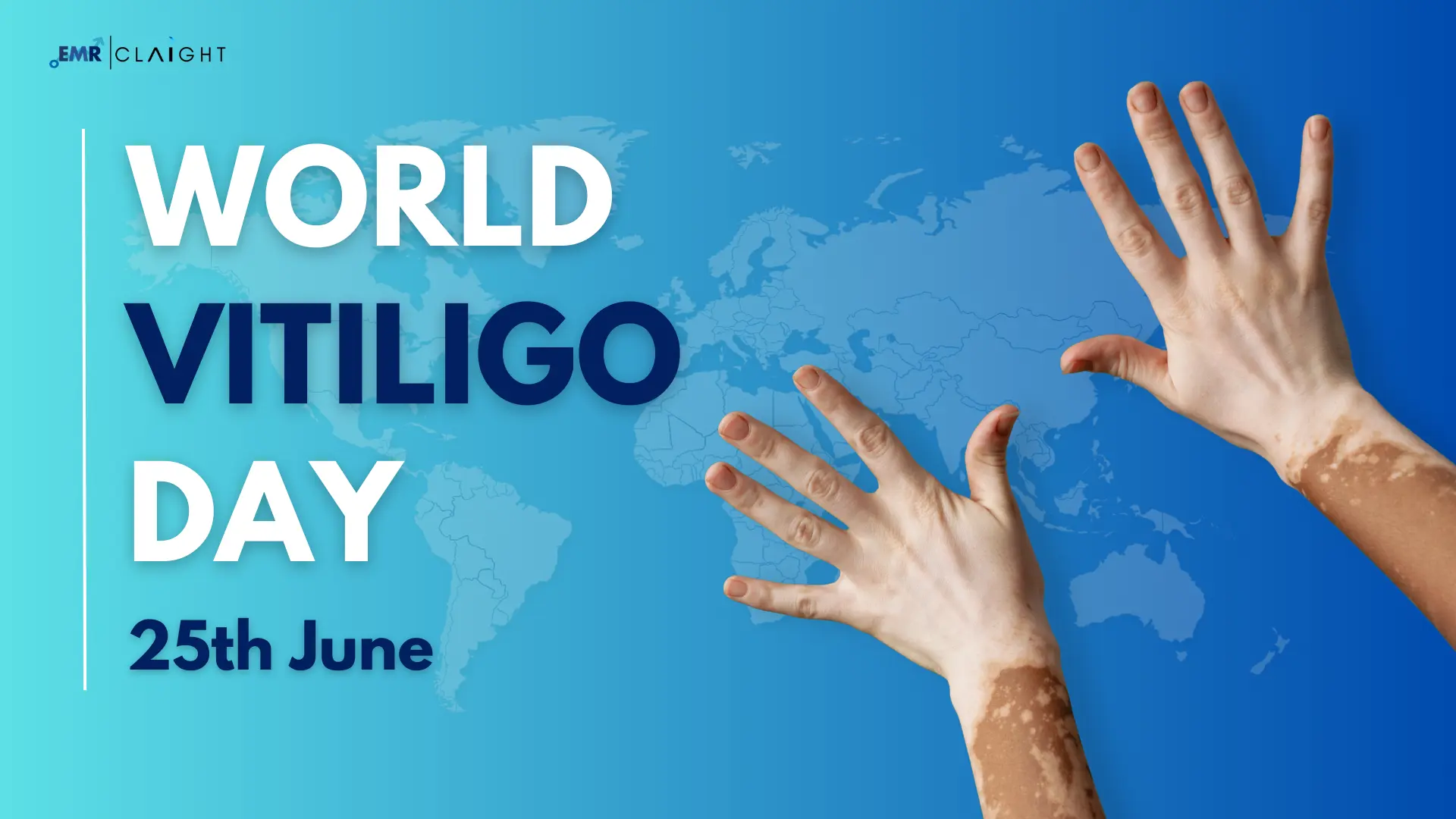
















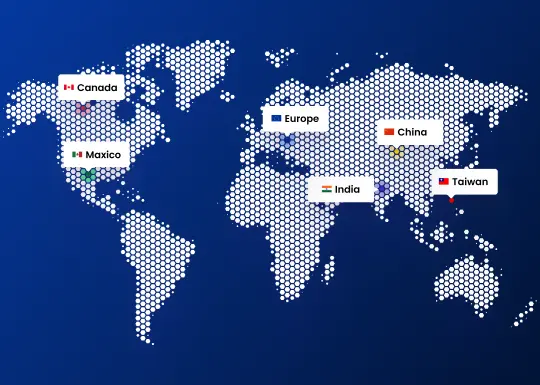
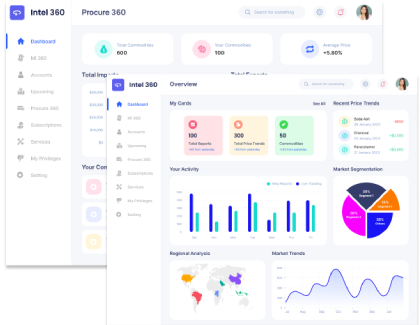







Share